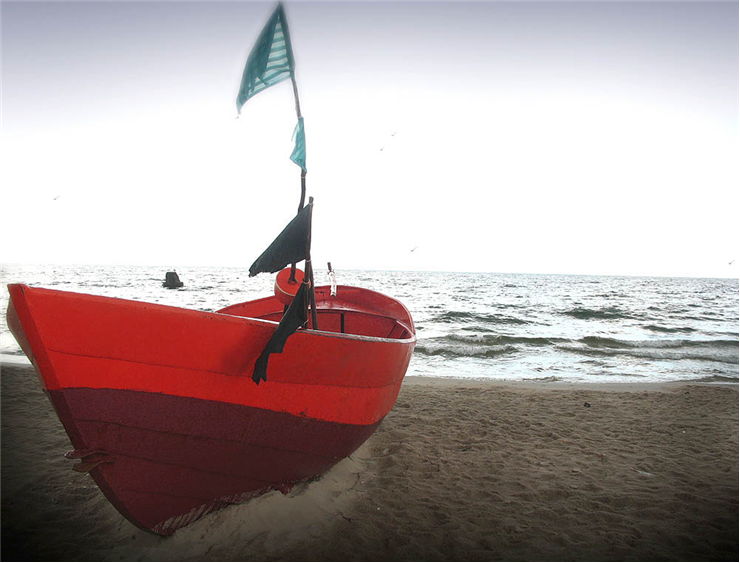History of Viking Ships
Viking ships were marine vessels used and built by the Vikings during the Viking Age (period from 793 AD to 1066 AD). Vikings built different ships depending on their intended use but their ships were generally slender and flexible, with symmetrical ends with true keel, built out of overlapping planks that are riveted together. At the bow or stern these ships sometimes had dragon's head or a circular decoration. These ships were very important to Vikings because they had practical and religious purpose. Viking kingdoms developed into coastal cities, dependent on the North Sea for survival and development. Without ships this would not be possible. Also, respectable Viking chieftains and noblemen were buried with a ship, whose role was to to transport them to the afterlife.
One of those ships types was “knarr”. It was a cargo ship, built for long voyages (like across Atlantic) and it could be operated by smaller crews. It had a length of about 16m, a beam of 4.5m, and a hull that could carry up to 24 tons. Vikings used it to transport trading goods like walrus ivory, wool, timber, wheat, furs and pelts, armor, slaves, honey, and weapons as well as to supply food, drink, weapons to warriors and traders along their journeys. They routinely crossed the North Atlantic to Iceland, Greenland and Vinland carrying livestock to Norse settlements. Vikings also had trading posts in the British Isles, Continental Europe and possibly the Middle East which were on the route of these ships.
Karves were similar to the knarr but a bit larger. They were also used for human transport and the movement of livestock and other cargo. They were able to navigate in very shallow water, and were used for coasting.
Faering is an open boat with two pairs of oars. They can carry a small sail, traditionally a square one.
Longships are various Viking ships that were graceful, long, narrow and light with a shallow-draft hull designed for speed. There were different types of longships, depending on size, design, construction, and style. Larger karves would be a type of longships. Vikings considered ships with 13 rowing benches the smallest ship suitable for military use and karves could have between 6 and 16. The snekkja, meaning 'thin and projecting,' had at least 20 rowing benches, a length of 17 m, a width of 2.5 m, and a draught of only 0.5 m. It could carry a crew of around 41 men. They were so light that they had no need of ports, they were simply beached. Skeid, meaning ‘that which cuts through water,’ ships were larger warships that had more than 30 rowing benches, a crew of some 70-80, and had more than 30 m in length. Drekkar are known from historical sources but not one is found by archaeological excavations. Drekkar prows carried carvings of menacing beasts, such as dragons and snakes whose role could be multifold but we don’t know for certain. They could be carved to protect the ship and crew from the terrible sea monsters of Norse mythology, but they could also have a ritual purpose or its role could be to frighten the enemies. Longships were the embodiment of Scandinavian naval power at the time, and were highly valued possessions.
Viking ships were more seaworthy and lighter than ships of the other civilizations of that period. They were made from split planks from an oak. Splitting made the planks stronger and they were connected together with wrought iron rivets and roves. Waterproof caulking was used between planks to create a strong but elastic hull. Most ships used sails as a method of power but also had oars when there was no wind.
